Henderson surgeon decompresses nerves to stop chronic pain
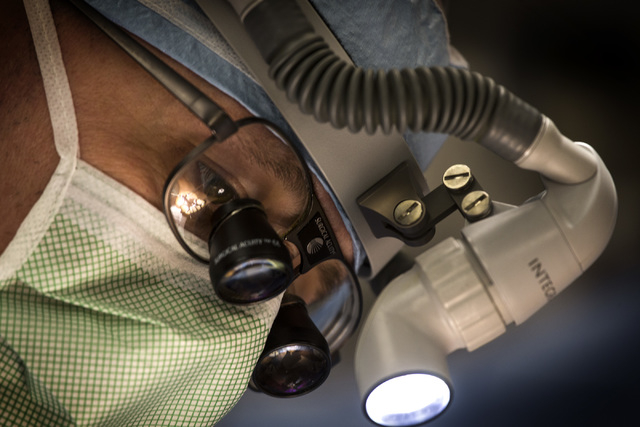
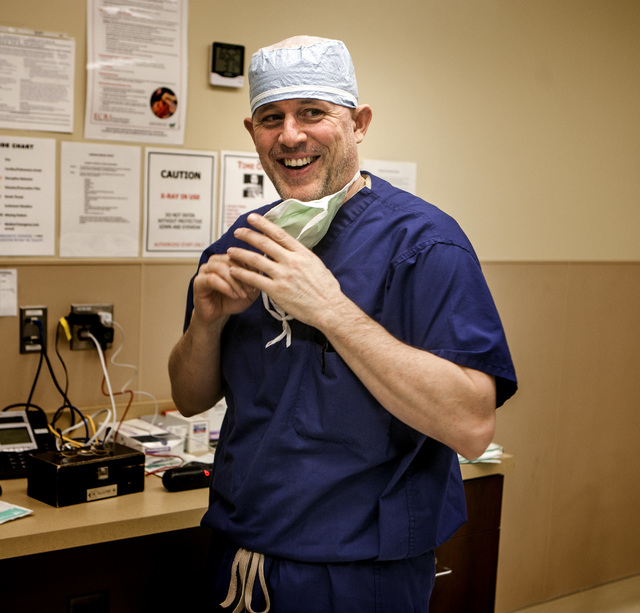
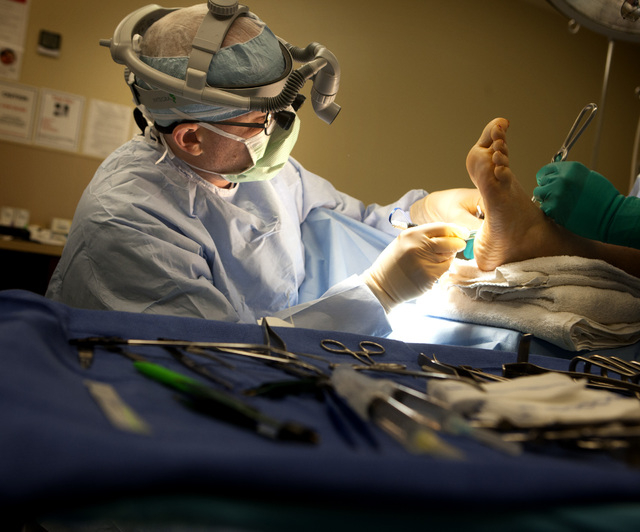
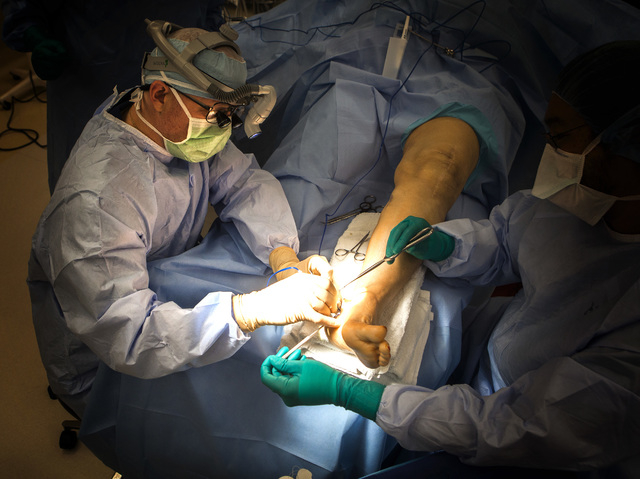



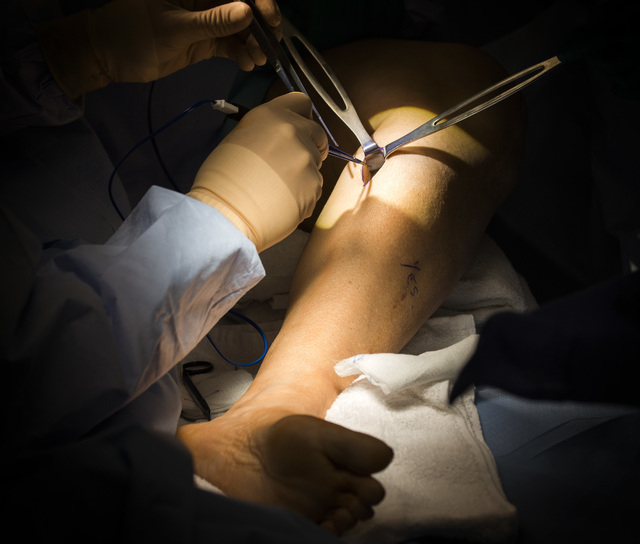
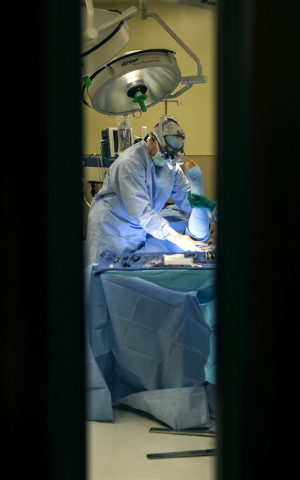
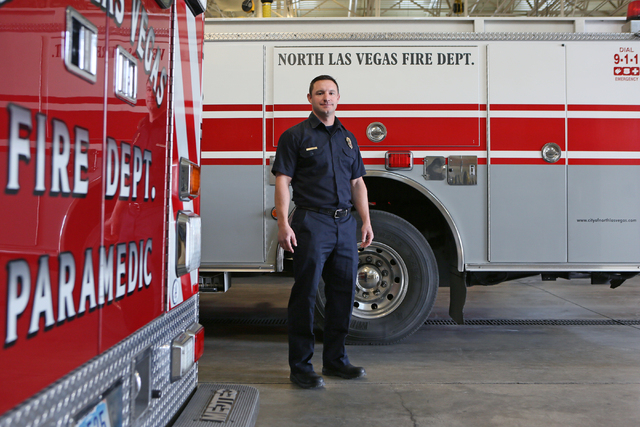
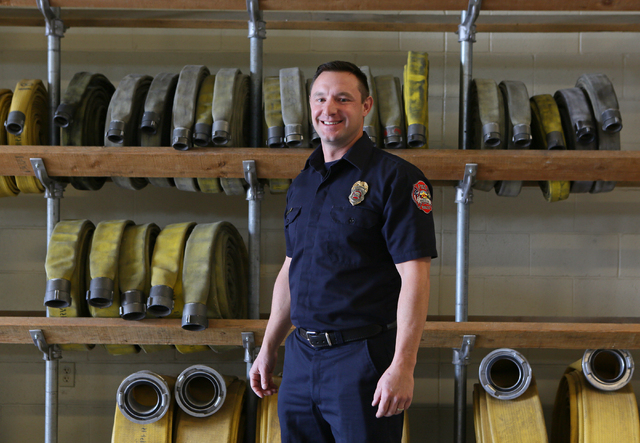

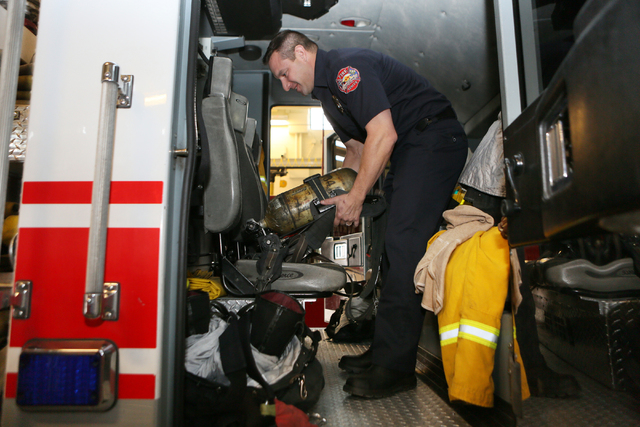
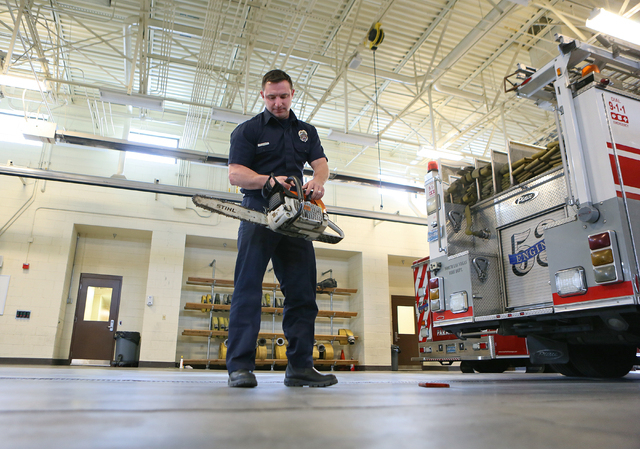
Pardon Dr. Tim Tollestrup’s tunnel vision.
The Henderson peripheral nerve surgeon has two fingers inserted into a 53-year-old woman’s left ankle during surgery to correct tarsal tunnel syndrome, the lower extremity equivalent of the more common condition affecting the wrists and hands.
“I spend a lot of time in tunnels,” Tollestrup says as he slices through tissue compressing nerves in the patient’s left ankle.
Most of the time, however, Tollestrup has a broader view, working as he does on the periphery where millions of Americans are plagued with pain, numbness, tingling and motor weakness. He is among a select group of surgeons who can eliminate chronic pain through peripheral nerve decompression, creating space for the nerves to function properly, or segmental denervation, which involves cutting a nerve to interrupt the pain response.
Tollestrup addresses the underlying causes of patients with chronic conditions, freeing them from a reliance on medications, returning them to a life that’s pain free. Use of opioid painkillers has increased dramatically in the past decade, resulting in more overdoses and deaths, and a legion of patients who rely on various medications for relief. A health care provider’s first, best intervention for pain management should be treating the underlying cause, but often such a diagnosis is elusive for even the most skilled and dedicated doctors.
Neuropathy, functional disturbances and pathological changes in the peripheral nervous system, causes nerves that are grossly swollen, infiltrated and encased in fatty tissue, sometimes two or three times the size of a normal nerve.
“The current understanding of peripheral neuropathy calls it a progressive, incurable disease,” Tollestrup said.
The approach of most doctors is to manage such conditions with medications, but the surgery Tollestrup specializes in has been shown to be effective in up to 80 percent of patients.
The central nervous system, the brain and spinal cord, serves as the body’s command center. Nerves that exit the skull or bony spine become part of the peripheral nervous system. More than 100 types of peripheral neuropathy have been identified, each with its own symptoms and prognosis, according to the National Institutes of Health.
Gross anatomy in medical school focuses mainly on the central nervous system, and a doctor in training receives few specifics on peripheral nerves. When medical students receive their first cadaver in medical school, all of the skin and fat is stripped off, eliminating the majority of peripheral nerves.
“You have to know the nerve anatomy very well and know where those compression points are,” he said. “It wasn’t until I did my fellowship that I learned anything at all about peripheral nerves.”
That expertise allows Tollestrup to correct situations where nerves are being compressed or pinched by surrounding tissue. Carpal tunnel release, one of the most common U.S. surgical procedures, involves severing the band of tissue around the wrist to reduce pressure on the median nerve.
“The concept is essentially the same no matter where you do a nerve decompression,” he said. “It’s just a different nerve, a different location, a different set of anatomy where you’re usually altering or removing a different piece of fascia, ligament or other tissue and opening the space around the nerve so it’s not so tightly compressed anymore.”
FIXING A FIREFIGHTER
Ryan Green, a North Las Vegas firefighter injured on the job in November 2011, was cured by Tollestrup after two surgeries failed to resolve pain in his right arm. Green was among the responders to an arson at a house near the intersection of Gowan Road and Valley Drive, an incident during which Capt. David Layton also fell. The smoke was so thick, Green went off a balcony and clutched a fire hose in his right had to break his fall.
Green didn’t feel symptoms from that strain until the next day. His arm had tightened up, but nothing was broken.
“I just felt funny,” he said. “In the beginning, it was like nothing else I had ever felt. It was annoying. It would come and go, sometimes shooting pain, sometimes dull.
“It wasn’t super bad.”
After the pain, numbness and tingling worsened in his entire right upper extremity, and Green opted for surgery. His first operation was on his shoulder in September 2012, 10 months after the injury. A second traditional surgery was performed to relieve numbness and tingling in his right hand.
Not only did the surgeries fail to relieve or even slow the progression of his symptoms, Green eventually began to lose strength in his right arm. In August 2013, nearly two years after his on-the-job fall, Tollestrup operated on Green’s brachial plexus, a complex web of nerves in the side of the neck that travels into the arm. A second surgery on his ulnar nerve near the right elbow in January 2014 was performed, and since he recovered from that procedure, he’s been pain-free.
The entire process has given Green a new appreciation for so-called drug seekers, the term emergency responders and other health care providers use to describe addicts who seek care when they need additional medications. Today, Green can identify with their plight, especially people with chronic pain issues who have lived for years without have the underlying cause addressed.
The only time Green missed from work were the four recovery periods after his surgeries. He was prescribed opioid pain relief to recuperate from surgery, but pushed himself to return to work. That experience gave him insight into why some people with chronic pain might give up and resolve themselves to a life of misery.
“When you get going on these narcotics, you have to detox to come off of them,” he said. “I never wanted to put myself in that position.
“I don’t do drugs at all, but I went through my own addictive phase.”
SUPPLY AND DEMAND
Tollestrup trained at the prestigious Dellon Institutes For Peripheral Nerve Surgery in Baltimore under Dr. A. Lee Dellon, a pioneer who took a more detailed understanding of nerve anatomy to employ surgical techniques to address chronic pain problems in parts of the body never before attempted.
Dr. Thomas Tung, immediate past president of the American Society for Peripheral Nerve, said fewer than 10 programs exist, but the need for such specialists is growing, and existing programs will be expanded and new ones created to meet the demand.
“We have an aging population,” said Tung, a professor at Washington University School of Medicine in St. Louis. “And we have more awareness. Patients are becoming more aware of solutions and treatment options. In the past, patients were told there was nothing that could be done for them, but that new awareness has been very helpful.”
In health care as with other industries, demand will create supply as more people understand how symptoms can be relieved through surgery, Tung said. As patients require more treatment options, doctors eventually will go into those fields to meet the need.
The techniques Tollestrup learned from Dellon are even more specialized than conventional peripheral nerve surgery.
Tollestrup’s patients range in age from as young as 10 to people in their 80s. Neuropathies increase in severity with age, but a person at any age can be affected by injury or repetitive stress.
“With some of these nerve problems, if they’re significant enough, the patients can feel like their lives are basically over,” Tollestrup said. “It’s not something you can give pain medication for.”
For example, patients can undergo multiple knee surgeries, but their pain issues fail to resolve because each operation leaves scarring that eventually results in the nerves becoming squeezed again.
“The reason is the soft tissue envelope surrounding those knees still has all those nerves in it,” Tollestrup said. “Those nerves can become damaged or entrapped in scar tissue, and the person has an ongoing pain generator.
“Each surgery can make that condition worse. If you disconnect those nerves, patients get better.”
Contact Steven Moore at smoore@reviewjournal.com or 702-380-4563.


















